- Home
- Neal Asher
The Soldier: Rise of the Jain, Book One Page 5
The Soldier: Rise of the Jain, Book One Read online
Page 5
“We need to be supplied by cargo runcible,” said Magus.
Orlandine shrugged, now focusing on another object gleaming in vacuum ahead of her. “You know how Earth Central feels about that. It took all my powers of persuasion to get the ground-based one for personnel.”
“A degree of caution that hampers us,” Magus observed.
Due to the dangers inherent in such a giant active mass of Jain technology, the de facto ruler of the Polity tightly controlled all Polity links to the vicinity of the accretion disc. AI net access was limited, ships returning from here underwent very heavy scanning, and Earth Central did not want a bulk cargo gate open because such a gate was two-way. Orlandine understood its caution, but also knew it wasn’t just about Jain tech finding an easy route into the heart of the Polity. Firstly, the ruling AI still did not trust either her or Dragon. It was suspicious that they could follow the same course as Erebus and subsume, or be subsumed, by Jain technology, then use a cargo runcible to attack the Polity.
The distant object began to resolve to her vision which, at present, was only slightly enhanced. She enhanced further and brought it into view. Her vessel, the Cytoxic, looked like a steel and glass jellyfish with rods hanging where tentacles should be. It was half a mile from top to bottom and, even as she drew closer, she felt links from its sub-AI questing for full connection. She held back and again tried to contact Dragon. This time the response was instant.
“I will be clean,” Dragon told her, its voice arriving directly in her mind.
“And you failed yet again,” Orlandine replied, just as directly. Also thinking that Dragon must be clean. The directive she had hard-wired into the platform AIs was indisputable—if Dragon showed the slightest sign of Jain tech, or its signature, they would obliterate him. No discussions, no debates, no bargaining.
“The Jain AIs are not only disinclined to talk but, when not utterly indifferent, they can be tetchy,” Dragon explained. “The indifference was understandable the last time I tried because they were disconnected from their realspace energy feeds—”
“Energy feeds that probably failed and rusted away millions of years ago.”
“Quite.” Dragon paused for a second. “They were at a low energy level and their thinking had become completely internalized.”
“And with the energy you gave them this time?”
“They got angry, briefly, hence the action you are seeing.”
“So they do have some control over the Jain tech here?”
“Rather there is some sensory link and the tech here reflects their mood.”
Orlandine grimaced. Even after all this time, and despite the fact that Dragon had rescued her from an eternity of drifting through vacuum, she still did not trust the creature. Had it really gone into the disc to try and talk to those five-million-year-old AIs?
“So you have learned nothing new?”
“Nothing,” Dragon replied.
“Then we must consider other options,” Orlandine stated. “The defence sphere is hardly . . . airtight. Something will get out sometime. This status quo must be broken.”
“Drastic actions are contra-indicated.”
That sounded far too reasonable from a creature that had a history of causing some serious mayhem.
“Because the Jain tech there is active,” Orlandine supplied.
“Because there is activity,” Dragon replied, obliquely, frustratingly.
The attempt, if it could be called that, of Jain tech to escape the disc seemed to be dying. After checking once more on the state of the defence sphere, she next focused on a new data feed from Dragon as it fought Jain incursions into itself. While doing this she again thought back to first principles. What did Jain technology do? A single seed of it, a node, would be picked up by a member of some civilized species, whereupon it would activate. It would spread, disrupt, eat up the intelligence of its recipients, and destroy the civilization. Once its fertile ground was drained of nutrients, it would then go to seed, spreading further Jain nodes, and then die.
Orlandine didn’t much like the analogy but it would do for now. The simple question that applied here was why was this Jain tech still active? Why had it not gone to seed and died, when in the accretion disc there was no civilization for it to destroy? Yes, it had been believed that the rogue AI of the dreadnought Trafalgar, which renamed itself Erebus when it utilized Jain tech and expanded beyond mere ship crystal, had been first to initiate the tech here. But maybe that wasn’t the whole story. Here lay a weakness in the fabric of space, a route for contact with the Jain AIs somnolent in U-space who, it had to be said, might only be coin-cidentally linked to the tech here. Perhaps this place was the nursery for Jain tech, the centre point of its spread. Perhaps something had been here long before Erebus arrived?
Round and round, and no answers were forthcoming despite the power of her mind. Orlandine ground her teeth in frustration, sure there was something she was missing. She ran prognostic programs on all the data she had, reviewed results, eyed an infinity of answers, then swore and disconnected. She had conducted this fruitless search for answers many times with the same result. She took some more human time, just to be, just to let things settle in her mind. To be calm. An hour passed, during which she gave her mind breathing space—not thinking at all. Then her vessel loomed before her, and her shuttle was engaging in a docking circlet.
Orlandine unstrapped as the two optics disengaged and snaked away, then towed herself to the door, which opened ahead of her. She pulled herself through a glass tube into the ship proper, and came down onto a grav-plated floor clad in carpet moss. A short corridor led into her lounge, where she headed towards the back, touching the centre of a small disc at her shoulder. Her blue shipsuit split at its seams and slithered over her skin towards the disc, the monomer fabric shrivelling as the disc drew it inside. Naked, she stepped into a dropshaft whose irised gravity field whisked her upwards, to a small atrium. This was filled with spiky blue alien plants sprouting orange and yellow butterfly flowers, and a scent like cinnamon filled her nostrils as she entered. One flower detached and flittered across to her, but she waved it away and ducked through a door on the other side of the atrium, which gave her access to her interface sphere.
Orlandine stepped inside and dropped into the chair at the bottom of the sphere. Straps crawled across her body to secure her in place. She still found this a creepy feeling despite having long ago abandoned the carapace she had worn in her early years. She took a breath and prepared her body, further data ports opening down her sides like bullet holes but with gleaming metal interiors, and another larger hole opening in her back. With a mental instruction the sphere began making its connections. A power-supply bayonet extruded from the chair behind her and entered her spinal socket. She felt the surge throughout as all her Polity- and Jain-based inorganic components went to high power. At the same time her medical system worked to protect her remaining human body from it. Next, lines of curved arms, with optic plugs on the ends, folded out to mate with those sockets running down either side of her body. She rested her head back, her eyes blind white but her mind seeing so much more now. A band closed about her head to hold it in place and a further plug folded out to engage in a socket behind her ear. She connected fully with her ship’s temporary sub-AI and simply absorbed it. Now Orlandine was complete. She was her ship and all its systems. She controlled everything absolutely.
I am no longer human, she thought.
She decided, with her physical presence at the accretion disc not really required, it was time for one short journey before she returned there. In her AI component, now more thoroughly melded with her human mind by the Jain tech she had conquered and taken into her body, Orlandine gazed upon the twisted terrain of underspace and made calculations. She tinkered with her U-engine, adjusting parameters just so, distorting fields and shifting pseudomatter, then input the required power. Her ship fell out of the real and into U-space, surging across that terrain until, a momen
t later, it bounced back up into the real again.
The gas giant lay millions of miles from Jaskor, at the outer edge of the Jaskoran system. Twenty moons orbited it and every one of them was being mined, with smelting plants or factory installations clinging to it like cybernetic shellfish. These supplied materials to a project wholly her own, and one which Earth Central would be less than happy about, if it knew. She felt sure it did not know. Polity dreadnoughts would have paid her a visit otherwise, despite the agreement between the Polity and the Kingdom that neither of their warships could enter the Jaskoran system. This was also a project she was sure Dragon had reservations about, and that those same reservations had impelled its recent visit inside the accretion disc.
Other objects orbited the planet and two of them lay nearby. These were what the smelting plants supplied, and these were the centre of Orlandine’s private project. Even as her ship surfaced from U-space, something probed it from one of them. Large weapons turrets swung towards her and targeting lasers lit up her ship’s hull.
“Oh, it’s you,” said a gruff voice, doubtless disappointed that the ship arriving wasn’t something he could destroy.
PRAGUS
The periods between the appearance of Jain-tech objects trying to escape the disc grew longer and longer. Summarily destroying those that came its way, Pragus gratefully returned much of its attention to the alien husk in the disposable laboratory. Close study of the creature’s genome began to produce a wealth of information. The genome itself bore similarities to DNA in that some of the bases were the same and large portions of it were helical—the simplest structure for storing such information. But this was a five-strand helix with numerous off-shoots and only vaguely attached external elements. In plain bulk it was twenty times that of the DNA of even modern humans and, like their DNA, had been highly modified. Pragus found capsules of nano-machines in it, as well as nano-crystals which likely contained quantum computing. When it felt it had learned enough to move beyond passive study, the AI set up a small autofactory to make an artificial womb, the design based on that of the creature. And then it extracted a single cell . . .
Pragus suspended the completed artificial womb inside another disposable lab, and soon the single alien cell was floating inside the high-temperature brine it contained. The cell was ready but inactive until Pragus made adjustments here and there with nano-fibres, shifting components of the genome, snipping the helix, reconfiguring just a small portion of it. The task had not been as difficult as the AI had supposed because sex hadn’t been involved. The creature created the further segments of itself by cloning. There was also no necessity for an ovum or much else extraneous to this cell. All the workings needed were inside that highly complex genome.
The cell activated—the tangled genetic matter inside writhing and reconfiguring itself. One small strand pushed out of this to the cell membrane, and broke through it. Nutrients were introduced next, flooding into the brine. Pragus realized the outgrowth from the cell must be some kind of sensor when the molecular touch of nutrients on it stirred further action. The membrane split and the outgrowth swung around, vacuuming up the food. Now exposed, the inner-cell germ also began to snare nutrients, expanding as it did so. In just a few minutes, the whole thing divided into five, with new membranes growing and then breaking. Pragus increased the nutrient feed and made some calculations. This was going to be fast. The next division resulted in twenty-five cells which started producing strange organelles that darted out to collect up further nutrients. One of these attached itself to the nano-scopic head of a scanner Pragus had placed within the womb, and data from it corrupted for a second. Two further divisions occurred and the small mass was issuing tendrils, their cell structure simplified and their genome mass just a hundredth of that of the cells in the main mass.
These tendrils grew rapidly, reaching out to the wall of the womb. Occasionally they too touched other sensor heads and again data corrupted. As they connected with the womb wall they rapidly keyed into the artificial venous system there, and this increased the nutrient supply to the central mass. In just two hours, it had attained the size of a human head. Its growth was so rapid that Pragus had to start running a cooling system around the womb, such was the heat generated by the cellular activity.
Pragus watched the shape of the creature forming—an embryo sprouting the nubs of limbs, the head, the dark patches of eye cells. The AI calculated that it would be ready to leave the womb in just a few more hours, and so turned its attention to a large chain-glass cylinder it had used in one of its previous projects. Here it had grown exotic plants and the heating system only needed a little upgrading to suit what it judged would be the creature’s needs. It instructed robots to make the required changes.
Further data on the Client showed Pragus what would be required inside the cylinder: a tree-like structure to supply certain nutrients, as well as a sanitary system to process dead segments of the creature, and to recycle them back into the nutrient system. In another part of the platform, Pragus set a factory to make these things with the same alacrity it manufactured munitions and replacement infrastructure during battle. In just that time the embryo had doubled in size and was now moving.
Pragus felt deep admiration for and a fascination with this growing creature. Its hunger for existence impressed the AI, its sheer tenacity was worthy of great respect. Pragus almost felt a sense of . . . a sense of . . . connection.
Something wrong.
Pragus ran swift diagnostics, tracing these emotions through its mind to a data dump. This was where it had placed the corrupted data from the sensor heads. The data seemed to have reconfigured itself into something coherent and made connections outside of the dump. Pragus considered consigning the dump to quarantine, but was too fascinated. The source had to be the creature’s nano-crystals, which likely contained quantum computing. The creature was an opportunist. Most life forms grew their bodies and the organic matter of their brains first—intelligence and mentality as an overlay on an evolved structure via environmental interaction. Instead, this creature must have retained a recording of its mentality to place in any available substrate—rather like human memcordings, the quantum-formatted artificial rubies many humans implanted in their skulls to record everything they were.
Fascinating . . .
Admirable . . .
Pragus now drove a more complex sensor head through the wall of the womb towards the central mass. It needed to examine . . . something. The sensor wound its way in and connected, sprouting further sensor fibres to wind through the growing mass. Data flowed back to Pragus, and the AI began to send it automatically to seemingly random portions of its crystal mind.
What am I doing?
Obviously the quantum recorded mind of the creature needed to be copied and saved. Such a wealth of information could not be abandoned to the quirks of fate.
Obviously . . .
3
Wormship: This vessel was one of the weapons used by the AI Erebus in its attack upon the Polity. All wormships were destroyed by a Polity war fleet so data on them is limited. They were an amalgam of Jain tech and Polity tech—an attempt to create war craft whose systems were widely distributed, and thus less vulnerable to weapons strikes. They consisted of a tangle of worm-forms, generally a yard or two wide, and incorporated everything found in discrete units aboard most Polity dreadnoughts. They were dense tech—components packed to the highest efficient density possible to use the energy available. After damage, they could scavenge materials from other damaged ships and rebuild themselves. Fragmented parts of wormships could reintegrate into a new whole. They could sequester other ships but, because Polity ships have such strong induction warfare defences, this had to be done by physical attack and contact. They were very dangerous and, had Erebus not actually turned on itself during its battle against the Polity, wormships in the skies of human worlds might have been the last thing any of us saw.
—Notes from her lecture “Modern Warfare” by
E. B. S. Heinlein
ANGEL
Finally the coils of the remaining wormship closed about him and obscured the view of debris out there, as well as the cooling glow of gas and the blurred starlight. Angel floated inside the shield of the hard-fields and the cage of tendrils enclosing him. The Wheel was gone. He felt both free and bereft of a companion that had been with him intermittently since his time on the surface of a gas giant moon. He gazed about himself, unsure of his next move, but then the oiled functioning of his mind began to reassert.
He shut down the hardfields and the cage of tendrils unravelled as a further mass rose up from below and cupped him. The corpse of the woman, Ruth, hung in zero gravity beside him like an accusation. He prodded it to send it drifting away, not really sure why he had grabbed it at the last moment—his feelings about her were confused. He held out his hands and two tendrils punched into his palms to give him full connection with his ship. Data flooded into his mind.
The explosion in Trike’s vessel had destroyed nearly half the mass of the wormship and many systems had yet to repair themselves. It would be some hours before he could engage the U-space drive and now, having waited so long inside his hardfield defence, he began to feel a strange empty panic.
Where had the Wheel gone?
Suddenly angry, he shook the tendrils from his hands, remaining engaged by radio and other EMR only to keep watch on the repairs and intervene if necessary. He did not need the Wheel there to offer its advice and opinions. He knew his aims, it was not as if it was a replacement for Erebus . . . The tangle which held him unravelled as it moved him to a nearby surface and Angel stepped out quickly, his gecko feet sticking him down. What now? He continued with his thoughts about Erebus. Maybe he would not have made the error he did with Trike if he still had a guiding intelligence occupying the half of his mind now virtually empty? But maybe he would have been without the vicious inclinations of that intelligence and simply destroyed Trike’s ship from a distance? Though he felt certain of his hatred for the humans, the AIs and the pra-dor, he did not like it that his one-time master and betrayer might still influence him . . .

 The Bosch: A Novella (Polity Universe)
The Bosch: A Novella (Polity Universe) Jack Four
Jack Four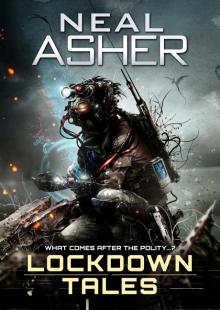 Lockdown Tales
Lockdown Tales The Warship
The Warship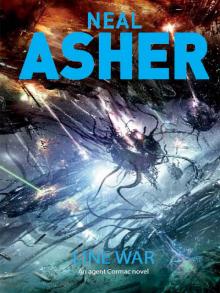 Line War
Line War Total Conflict
Total Conflict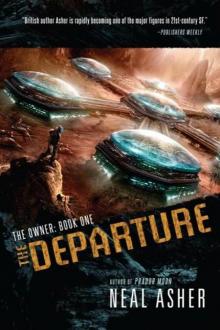 The Departure
The Departure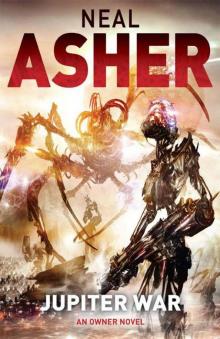 Owner 03 - Jupiter War
Owner 03 - Jupiter War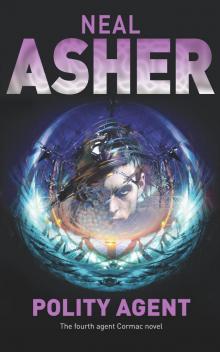 Polity Agent
Polity Agent Prador Moon
Prador Moon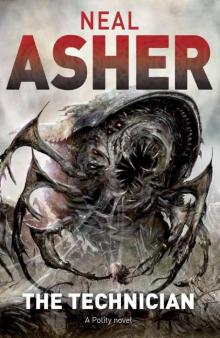 The Technician
The Technician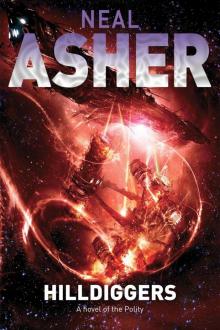 Hilldiggers
Hilldiggers Gridlinked
Gridlinked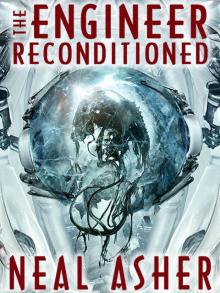 The Engineer ReConditioned
The Engineer ReConditioned Dark Intelligence
Dark Intelligence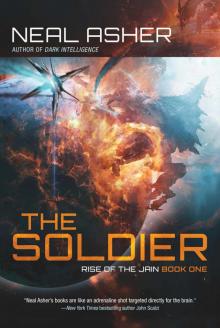 The Soldier: Rise of the Jain, Book One
The Soldier: Rise of the Jain, Book One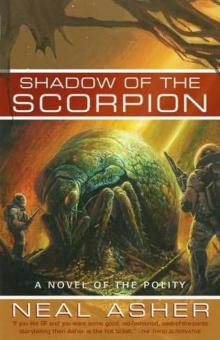 Shadow of the Scorpion p-2
Shadow of the Scorpion p-2 The Skinner
The Skinner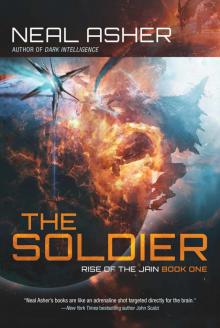 The Soldier
The Soldier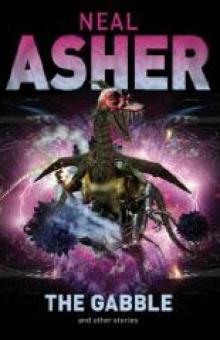 The Gabble p-13
The Gabble p-13 The Gabble and Other Stories
The Gabble and Other Stories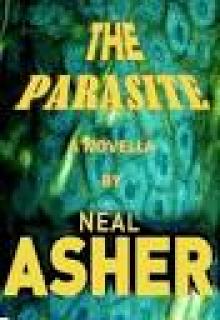 The Parasite
The Parasite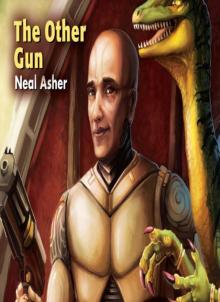 The Other Gun
The Other Gun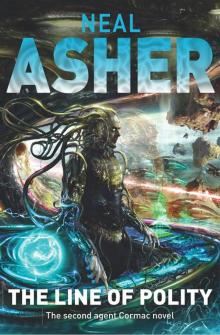 The Line of Polity
The Line of Polity Zero Point (Owner Trilogy 2)
Zero Point (Owner Trilogy 2)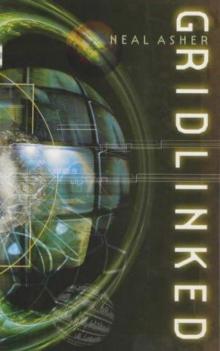 Gridlinked ac-1
Gridlinked ac-1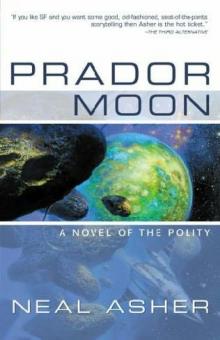 Prador Moon p-1
Prador Moon p-1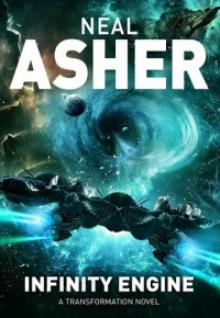 Infinity Engine
Infinity Engine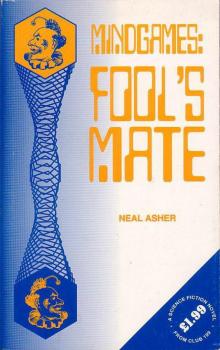 Mindgames: Fool's Mate
Mindgames: Fool's Mate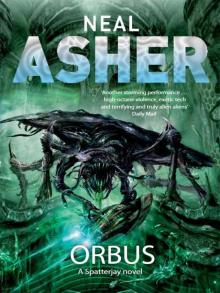 Orbus
Orbus Africa Zero
Africa Zero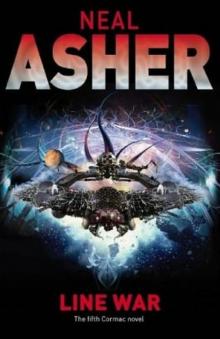 Line War ac-5
Line War ac-5 Brass Man
Brass Man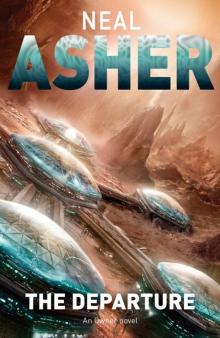 The Departure to-1
The Departure to-1 Cowl
Cowl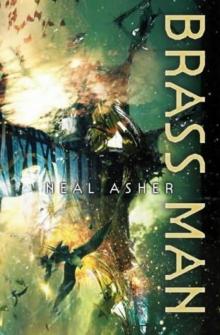 Brass Man ac-3
Brass Man ac-3 Hilldiggers (polity)
Hilldiggers (polity)![Greg Bear - [Eon Trilogy 1] - Eon (rescan) (v1.0) Read online](http://i1.bookreadfree.com/i2/04/08/greg_bear_-_eon_trilogy_1_-_eon_rescan_v1_0_preview.jpg) Greg Bear - [Eon Trilogy 1] - Eon (rescan) (v1.0)
Greg Bear - [Eon Trilogy 1] - Eon (rescan) (v1.0)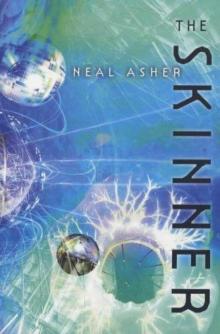 The Skinner s-1
The Skinner s-1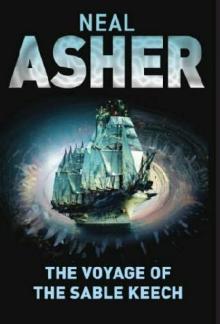 The Voyage of the Sable Keech s-2
The Voyage of the Sable Keech s-2 The Line of Polity ac-2
The Line of Polity ac-2 War Factory: Transformations Book Two
War Factory: Transformations Book Two Polity Agent ac-4
Polity Agent ac-4